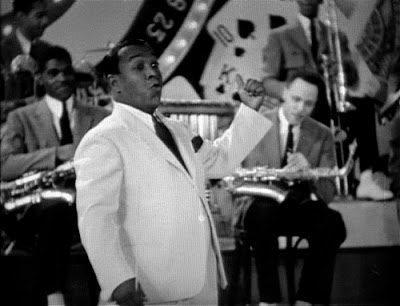George Liberace (July 31, 1911 – October 16, 1983) was an American bandleader, violinist and television performer who for years was the silent straight man for his flamboyant piano
- playing younger brother, Liberace.
George was born in Menasha, Wisconsin to Salvatore Liberace and Frances Zuchowska. There were four sons in the family -- George, Angie, Rudy and "Lee," with the youngest achieving the greatest popularity and fame. His father played French horn professionally while working a "day job" as a factory worker or common laborer.
 Young George Liberace played violin, while Lee was a prodigy on the piano. (Note: Angie and Rudy were also said to be musically talented, but no records were readily available.)
Young George Liberace played violin, while Lee was a prodigy on the piano. (Note: Angie and Rudy were also said to be musically talented, but no records were readily available.) George, like Lee, had his greatest successes during the '40s, '50s and '60s. He made guest appearances with various orchestras and fronted his own orchestra on a number of occasions, including the Beverly Hilton in Hollywood. He appeared as conductor for such orchestras as the Los Angeles Philharmonic, the Milwaukee Philharmonic, the St. Louis Symphony, the Dallas Symphony, and the Hollywood Bowl Symphony.
Here's Blue Monday from above LP
He appeared in several movies (including the one that starred his younger brother, "Sincerely Yours") and made television appearances with Jack Benny, Red Skelton, George Gobel, Jimmy Durante and others. During World War II, his musical career was put on hold while he served in the Navy's Construction Battalion
 (SeaBees), and after the war he stepped into the role that occupied him for many years, that of musical director of his brother's TV show (1952-1955).
(SeaBees), and after the war he stepped into the role that occupied him for many years, that of musical director of his brother's TV show (1952-1955). He made command performance appearances before the Pope, the Queen of England, and the President of the U.S. In the late 1960s he branched out from his musical background and set up two fast food franchises, neither of which survived the long run. (They were "Mr. Turkey" and "Mr. Ed restaurants.) In the 1970s, he founded the successful "Music by George" music publishing house. He retired from conducting in the late 1970's and moved to Las Vegas to devote full time to the Liberace Museum showcasing his younger brother, he assumed administration of that venue until his death.
He was deeply involved with the Liberace Foundation for the Performing & Creative Arts, which provided music scholarships for young artists at colleges across the United States. George died of leukemia on 16 October 1983 in Las Vegas, Nevada and was buried in Forest Lawn Memorial Park in the Hollywood Hills.
(info mainly vinyltimemachine.com)

































.jpg)














